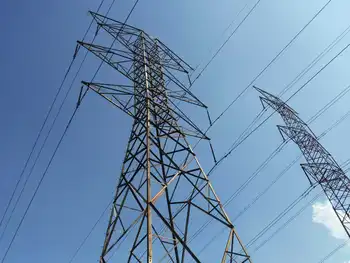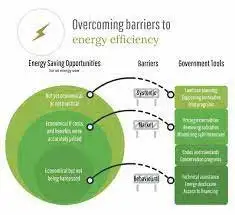Oldest Nuclear Power Plant In World To Close
By Retuers
NFPA 70e Training - Arc Flash
Our customized live online or in‑person group training can be delivered to your staff at your location.

- Live Online
- 6 hours Instructor-led
- Group Training Available
State-owned nuclear power firm BNFL said in a statement that the 196 megawatt plant, small by the standards of more modern nuclear reactors, would stop generating on March 31. Calder Hall was opened in 1956 at BNFL's Sellafield nuclear site. It is one of seven plants built in Britain using the costly Magnox technology, abandoned everywhere else in the world already but still producing about five percent of Britain's electricity. "The depressed price for electricity coupled with the relatively high overheads of smaller stations such as Calder Hall makes its continued operation uneconomic," said BNFL in a statement. Calder Hall was originally scheduled for closure in 2006, along with two larger stations, but BNFL said last year it expected to bring forward the closure. A 40% slide in UK power prices sice 1998 as market liberalisation exposed excess capacity has left high-cost nuclear power in deep trouble. Last year the British government was forced to provide financial support to its main nuclear producer and its biggest single electricity generating company, British Energy Plc, which was privatised in 1996. The firm may still face insolvency. The nuclear industry's financial troubles have emboldened anti-nuclear groups calling for the early closure of all the nation's nuclear power stations, which account for about 25% of its power demand, and an end to loss-making BNFL's nuclear fuel reprocessing activities. In recent energy legislation the government avoided a decision on whether to start building new nuclear reactors. None has been built for 14 years, and most are due to close over the next two decades. The news comes as the British Wind Energy Association (BWEA) announced an acceleration of permissioning for wind farms, seen by some environmentalists as a viable alternative to nuclear. The BWEA said that in the space of just one week consent was awarded for 120 offshore turbines with a total capacity of 397 megawatts -- more than the 344 megawatts installed throughout the 1990s.
Calder Hall was opened in 1956 at BNFL's Sellafield nuclear site. It is one of seven plants built in Britain using the costly Magnox technology, abandoned everywhere else in the world already but still producing about five percent of Britain's electricity.
"The depressed price for electricity coupled with the relatively high overheads of smaller stations such as Calder Hall makes its continued operation uneconomic," said BNFL in a statement.
Calder Hall was originally scheduled for closure in 2006, along with two larger stations, but BNFL said last year it expected to bring forward the closure.
A 40% slide in UK power prices sice 1998 as market liberalisation exposed excess capacity has left high-cost nuclear power in deep trouble.
Last year the British government was forced to provide financial support to its main nuclear producer and its biggest single electricity generating company, British Energy Plc, which was privatised in 1996. The firm may still face insolvency.
The nuclear industry's financial troubles have emboldened anti-nuclear groups calling for the early closure of all the nation's nuclear power stations, which account for about 25% of its power demand, and an end to loss-making BNFL's nuclear fuel reprocessing activities.
In recent energy legislation the government avoided a decision on whether to start building new nuclear reactors.
None has been built for 14 years, and most are due to close over the next two decades.
The news comes as the British Wind Energy Association (BWEA) announced an acceleration of permissioning for wind farms, seen by some environmentalists as a viable alternative to nuclear.
The BWEA said that in the space of just one week consent was awarded for 120 offshore turbines with a total capacity of 397 megawatts -- more than the 344 megawatts installed throughout the 1990s.











